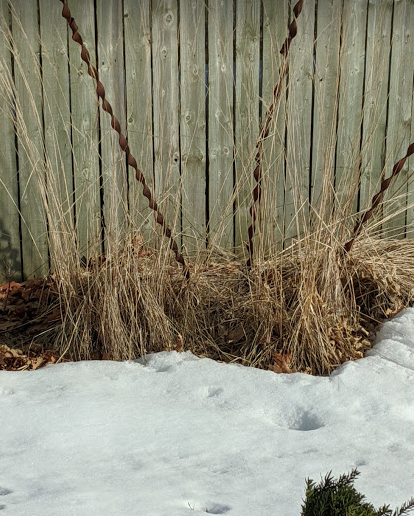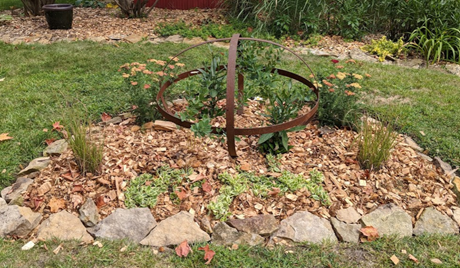Click below to listen to my 2 min. Garden Bite radio show: Cutting back ornamental grasses
Those gorgeous grasses are looking winter weary! It’s not quite time for my area yet… but temperatures are supposed to be getting into the 60’s in southeastern Minnesota, where I live! So I might see what I can get done!

All warm season grasses such as Miscanthus, switchgrass, big and little bluestem, prairie dropseed and Indian grass die back at the crown of the plant. Don’t worry about cutting them back too low. Their buds are at the root-shoot junction which is often buried in the soil.

It’s a little too early for me to cut these back. But I wanted to give you a heads up!
Tie large tops together to make them easier to cut. These grasses are slow to green up in the spring, so you have a few weeks to do the cut back.

Cool season grasses however such as feather reedgrass (Calamagrostis), blue oat grass, blue fescue, tufted harigrass (Deschampsia), most Carex, or sedges will start to grow as soon as temperatures warm in the spring.
I use loppers to trim these back but you can use pruners, hedge trimmer, scythe [if there’s room]. Even a lawn mower, depending on the grass AND how wet the area is. If it’s still spongy, don’t run a heavy mower over it.

A good rule of thumb for grass cut back is: if its brown cut it down. Spring cut back opens up the crown of the plant to rain and sunlight, allowing it to green up faster. Grass tops decompose quickly in the compost pile, if necessary cut the taller stems into half or 1/3 to fit into your pile.

I did some slicing and dicing last year and moved some grasses and this sculpture!

